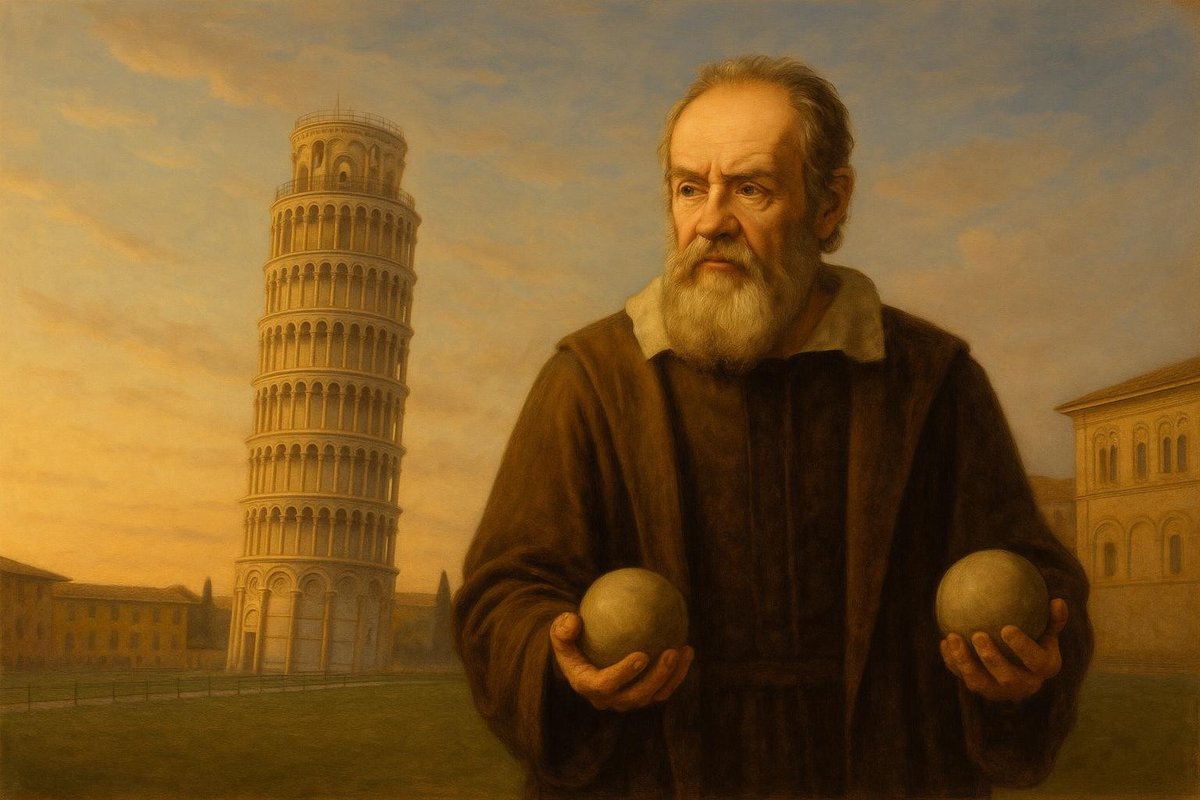
In the realm of science, few moments are as iconic as when we dared to challenge our most sacred beliefs. Galileo Galilei, the brilliant mind of the Renaissance, invited the world to question the very nature of falling objects with his famed experiment at the Leaning Tower of Pisa. But what does this age-old story tell us about our relationship with authority and tradition?
Hypothesis & Context: A World Bound by Aristotelian Views
Before Galileo, many people believed in the teachings of Aristotle, which declared that heavier objects fall faster than lighter ones. Interestingly, this assumption dominated scientific thought for nearly two millennia. The Renaissance, however, was an era of reawakening, where the pursuit of truth began to transcend the bounds of tradition.
- Aristotle’s theory of gravity: Heavier objects fall faster.
- Renaissance spirit: An emerging curiosity and skepticism.
- Galileo’s hypothesis: All objects fall at the same rate, regardless of mass.
Galileo’s daring hypothesis was not just a scientific conjecture; it was a bold questioning of authority. After all, who were we to defy Aristotle? Yet, as time goes on, we learn that challenging the established order is sometimes the only way to uncover the truth.
Setup & Method: A Towering Experiment
The mythic image of Galileo standing at the Leaning Tower of Pisa, two spheres in hand, is a vivid reminder of human curiosity. Imagine the anticipation as he climbed the iconic structure, his mind set against the weight of centuries-old beliefs.
- Location: The Leaning Tower of Pisa, Italy.
- Objects: Two spheres of different masses.
- Method: Dropping both spheres simultaneously to observe their fall.
Galileo’s simple yet elegant method captured the essence of the scientific revolution. It was not merely about the act of dropping objects; it was a demonstration of empirical inquiry. In doing so, he symbolized a shift from reliance on ancient texts to direct observation and experimentation. One can almost hear the hushed silence of his audience, awaiting the results that would soon reverberate through the annals of science.
Results & Reactions: The Fall Heard Around the World
As the two spheres raced towards the Earth, Galileo’s hypothesis was dramatically confirmed: they hit the ground simultaneously. This simple act defied hundreds of years of accepted wisdom and sparked a wave of intellectual excitement and debate.
- Outcome: Both spheres fell at the same rate, defying Aristotelian physics.
- Reactions: Widespread astonishment and a paradigm shift in scientific understanding.
- Debates: It prompted discussions on the nature of gravity and motion.
No wonder this experiment is often depicted as the very birth of modern physics. It posed an intriguing question: What else could we learn if we dared to question authority? The resulting intellectual ferment laid the groundwork for future luminaries like Newton, who would further unravel the mysteries of gravity.
Implications: Beyond the Laws of Falling Bodies
Galileo’s experiment was more than a scientific revelation; it was a cultural paradigm shift. It invited humanity to question and explore beyond the boundaries set by tradition and dogma.
- Shift: From dogma to empirical evidence.
- Legacy: Inspired further scientific inquiry and innovation.
- Perception: Redefined humanity’s understanding of natural laws.
The implications reach far beyond physics, resonating with diverse fields where questioning established norms can lead to groundbreaking advancements. In a world increasingly defined by rapid change, Galileo’s courage to question and test remains a guiding light. Does our perception of truth alter when we challenge authority? Perhaps, as Galileo showed, it’s the only path to enlightenment.
In the end, Galileo’s experiment reminds us that the pursuit of truth often requires stepping beyond the shadow of giants, daring to see the world with new eyes.
Share this story with a friend or a fellow thinker. Discuss how questioning accepted norms can lead to profound discoveries. After all, curiosity is a contagious flame that lights the way to knowledge.

Leave a Reply